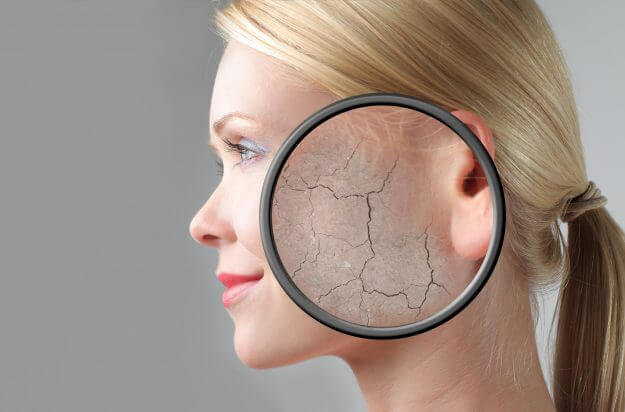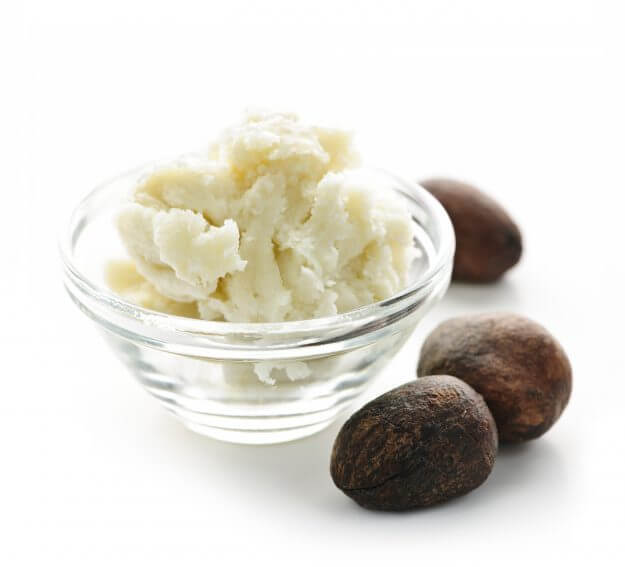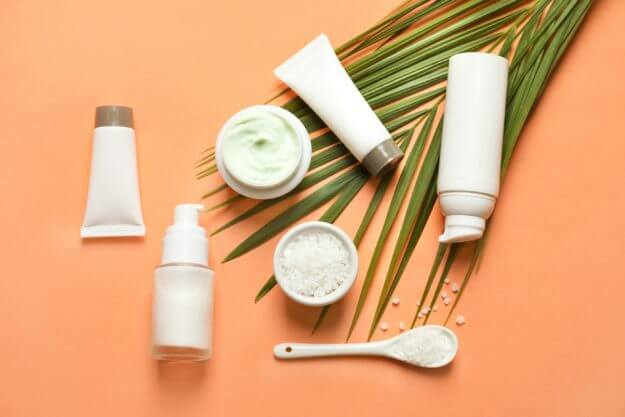It can be puzzling trying to quench dry skin. It often feels that no matter how much you moisturize, it just never seems to be enough. Symptoms like dry patches, itchy or flaky skin are common. Dry skin is uncomfortable and leads to a more visible appearance of wrinkles.
How Do You Know If You Have Dry Skin?
Dry skin seems to occur more in the colder months for everyone; but, for some dry skin is a year round problem. Some major signs of having dry skin are:
- No visible pores
- Dry patches
- Itchy skin
- Flaky scales
- Dull, sallow looking complexion
- Visible wrinkles especially around mouth area
- Bleeding from cracked skin
Step By Step Skin Care Regime
Here is a simple step by step night care regime that will increase the appearance of supple, glowing skin and keep your complexion in a better state.
Cleanser
Using a cleanser designed for one's skin type is probably one of the more critical factors to an effective regime. Those with dry skin have to be wary of cleansers that contain harsh sulfates that strip skin of all oil. Considering that dry skin has little oil to begin with, this stripping causes a sand paper like texture to occur and can lead to bleeding. Using a gentle based cleanser is the best route for those with dry skin. These “soap-free” formulas gently cleanse skin while replenishing moisture. Look for “fragrance-free formulas and alcohol-free to prevent further dehydration. Also keep an eye out for cleaners with a cream base or cleansing milks that hydrate as they cleanse.

Toner
Contrary to popular belief, toners are not just designed for those with an oily complexion. While toners are typically designed to remove excess oil; on the other hand, an oil based toner hydrates and balances PH. Those with dry skin are more flexible to use heavier oils that are classified as comedogenic. Oils such as coconut, macadamia or mineral oil are deeply nourishing for dry skin. Astringents and alcohol products should be avoided at all costs and replaced with hydrating mists (i.e. rosewater). A hydrating toner is designed to sooth and hydrate rather than shrink pores like those designed for oily skin. Those with dry skin should use toners 2-3 times per week to avoid any potential irritation.

Exfoliate
Now scrubbing away at dry flaky skin may sound counterproductive; but, those with dry skin should exfoliate. This action works to remove the build up caused by dead skin cells that cause a dull, sallow appearance. When this layer of dead skin cells are removed, hydrating oils, serums and moisturizing can be more easily absorbed.
The question is how often how to exfoliate? Considering that the skin turnover for dry skin is fairly quick, once a week is more than sufficient. Avoid harsh gritty scrubs and reach for products with alpha hydroxy acid or glycolic acid which promote anti-aging properties and hydrating enzyme bonds.
Hydration
This step is incredibly critical for dry skin because it seals and protects from further peeling. It is best to apply a moisturizer when skin is still slightly damp to immediately trap nourishing ingredients. Those with dry skin should reach for rich, creamy textures that will seep deep into dermal layers to hydrate from the inside out. Water or gel based moisturizers are useless for dry because they evaporate far too quickly to gain any sort of benefit. Ingredients such as shea butter, hyaluronic acid or squalene work to create a barrier around skin to trap moisture and prevent water from leaving skin. Moisturizers should be applied morning and night to keep skin feeling supple and smooth throughout the day.

Product Recommendations
Here are a number of cleansers, toners and moisturizers to build a dry skin based regime
Cleansers
- CeraVe Hydrating Facial Cleanser (12 oz)
- LAVO Cleanser for Sensitive and Dry Skin
- Coconut Milk & Honey Face Cleanser by Foxbrim (6 oz)
- DSE Albolene Moisturizing Cleanser Unscented (12 oz)
- Cetaphil Gentle Skin Cleanser (16 oz)
Toners
- Mario Badescu Facial Spray (4 oz)
- Rose Water Facial Toner by Leven Rose (4 oz)
- Neutrogena Alcohol And Oil-Free Toner (8.5 oz)
- L'Oreal Paris HydraFresh Toner (8.5 oz)
- Pure Rose Water Facial Toner By Poppy Austin (4 oz)


 Cetaphil Moisturizer and Moisturizing Cream
Cetaphil Moisturizer and Moisturizing Cream  Finding the Best Moisturizer For Dry Skin
Finding the Best Moisturizer For Dry Skin  Top 5 Organic Skincare Brands To Try
Top 5 Organic Skincare Brands To Try  Dry Skin Treatments For Diabetics
Dry Skin Treatments For Diabetics  Top 10 Holy Grail Skincare Products
Top 10 Holy Grail Skincare Products  The Top 5 Moisturizers for Sensitive Skin
The Top 5 Moisturizers for Sensitive Skin